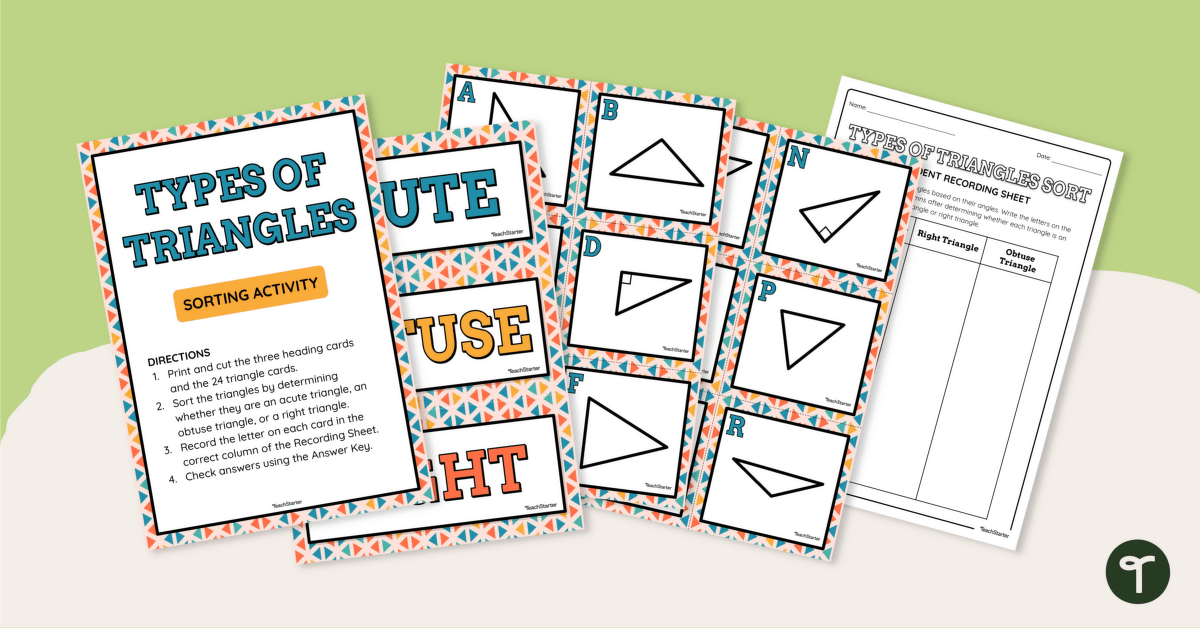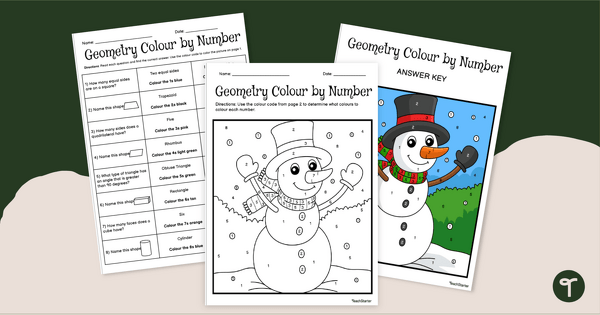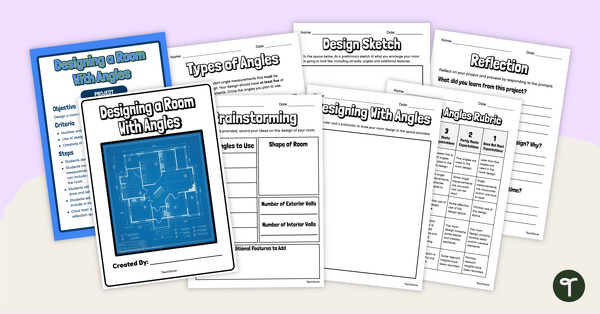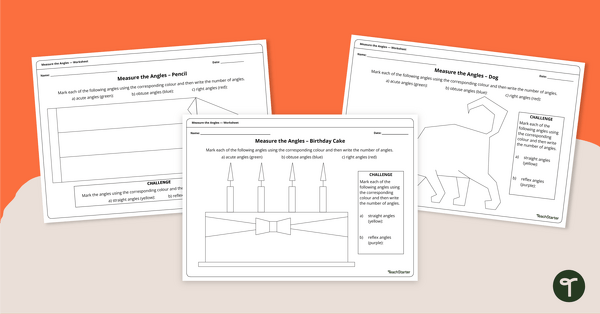Play this sorting game when learning how to classify triangles according to their internal angles.
What Are the Different Types of Triangles?
At first glance, triangles seem quite similar to each other. After all, they all have three sides and three angles, right? But despite appearances, not all triangles are created equally!
Triangles can be named and classified according to the size of their internal angles. The three main types of triangles are as follows:
- Acute triangle – A triangle that contains three acute angles (angles between 1° and 89°).
- Right triangle – A triangle that contains a right angle (90°).
- Obtuse triangle – A triangle that contains an obtuse angle (an angle between 91° and 179°).
How to Complete This Types of Triangles Sorting Activity
This hands-on sorting activity has been designed to help your students classify a variety of triangles according to whether they are an acute triangle, a right triangle or an obtuse triangle. Complete the activity by following the instructions below.
- Print and cut the three heading cards and the 24 triangle cards.
- Students sort the triangles by determining whether they are an acute triangle, an obtuse triangle or a right triangle.
- Record the letter on each card in the correct column of the Recording Sheet.
- Check answers using the Answer Key.
The resource includes:
- 1 x instruction page
- 3 x sort headings
- 24 x triangle sort cards
- 1 x recording sheet
- 1 x answer key.
This resource is perfect as a maths group activity, a whole-class review or an independent fast-finisher activity.
Tips for Scaffolding and Extension
At Teach Starter, we know you’re always looking for ways to adapt tasks to cater to the individual learning needs of students. Here are some tips on how you might extend this activity for your more-confident learners, as well as how to support those students who need a little extra help to stay on track.
- Challenge Your High-Fliers – Mathematical reasoning is an important part of the curriculum. Challenge your more-capable mathematicians to write paragraphs for a selection of cards explaining the process they followed when classifying each triangle. Have students present some of their paragraphs to the class.
- Support Your Less-Confident Learners – Some students may benefit from scaffolding materials to assist them while sorting the triangles. Provide examples of each triangle type with all the attributes labelled. Students may also benefit from using a protractor to help them determine the size of each angle.
Easily Prepare This Resource for Your Students
Use the dropdown icon on the Download button to select between the editable Google Slides or easy-print PDF version of this resource.
Print on thick card for added durability and longevity. Place all pieces in a folder or large envelope for easy access.
Be sure to remove the answer key before distributing this activity to your students!
This resource was created by Lorin Davies, a Teach Starter collaborator.
Click below for more resources to save time on your Maths lesson planning!
[resource:4989453] [resource:4848007] [resource:4991425]












0 Comments
Write a review to help other teachers and parents like yourself. If you'd like to request a change to this resource, or report an error, select the corresponding tab above.